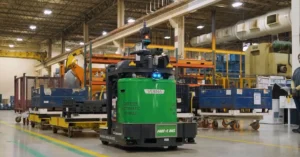The Indispensable Role of Team Structure in the Modern Workplace
In today’s fast-paced and highly competitive business environment, teamwork has become more critical than ever before. A well-structured team can effectively harness the diverse skills and expertise of its members to achieve remarkable outcomes. From startups to multinational corporations, organizations that prioritize a strong team structure reap numerous benefits, including enhanced productivity, increased innovation, and improved employee morale. This blog post will delve into the significance of team structure in the workplace and highlight its profound impact on overall success.
- Maximizing Individual Strengths: Team structure allows organizations to align employees’ skills and talents in a manner that maximizes productivity. By carefully assigning roles and responsibilities based on individual strengths, organizations can create a synergy that boosts performance. When team members are empowered to focus on tasks that best match their abilities, they are more likely to excel, resulting in improved overall team performance.
- Fostering Collaboration and Communication: Effective team structure fosters collaboration and communication among employees. By dividing tasks and establishing clear lines of responsibility, team members can work together seamlessly, leveraging their respective expertise. A well-structured team ensures that information flows smoothly, enabling better decision-making, problem-solving, and idea sharing. This collaborative environment fosters a sense of camaraderie and facilitates the exchange of diverse perspectives, leading to more innovative and creative solutions.
- Encouraging Accountability and Ownership: A strong team structure promotes a culture of accountability and ownership. When each team member has a defined role and is aware of their responsibilities, they become more invested in the team’s success. By establishing clear performance expectations and measurable goals, organizations can hold individuals accountable for their contributions. This accountability cultivates a sense of ownership, motivating team members to take initiative, deliver high-quality work, and consistently strive for excellence.
- Facilitating Adaptability and Resilience: Team structure plays a crucial role in building adaptable and resilient teams. In an ever-changing business landscape, organizations must be prepared to face unexpected challenges. A well-structured team can quickly adapt to shifting priorities and dynamic situations. The ability to reconfigure roles, redistribute tasks, and leverage individual strengths enables teams to navigate uncertainties more effectively. By embracing flexibility and agility, organizations can better respond to market demands, outperform competitors, and drive sustainable growth.
- Nurturing Employee Growth and Engagement: Team structure also contributes significantly to employee growth and engagement. When employees feel valued, recognized, and appropriately challenged within their teams, job satisfaction increases. A structured team environment provides opportunities for professional development, skill enhancement, and knowledge sharing. Team members can learn from one another, leverage collective experiences, and receive constructive feedback. This collaborative growth culture not only fosters individual development but also enhances overall employee engagement and retention.
In the modern workplace, the significance of team structure cannot be overstated. Organizations that prioritize the creation of well-structured teams benefit from improved productivity, enhanced collaboration, increased accountability, and greater adaptability. Moreover, a strong team structure nurtures employee growth and engagement, leading to a more satisfied and motivated workforce. As businesses continue to evolve, investing in team structure becomes paramount for success, ensuring that organizations can harness the collective power of their employees and achieve remarkable results.








